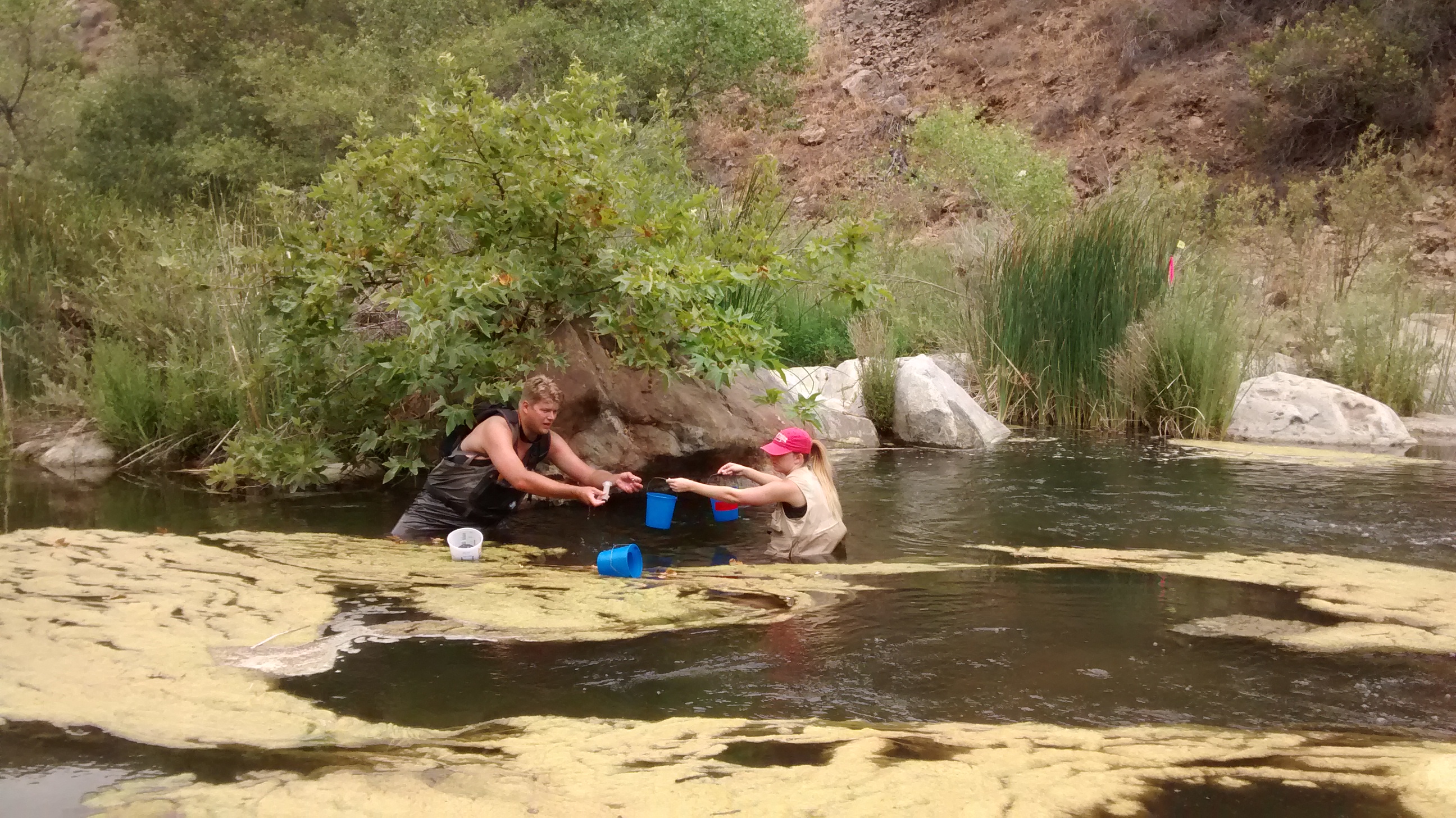Study examines climate change’s influence on eutrophication in Santa Margarita watershed

SCCWRP and its partners have completed a three-year study examining how climate change is expected to influence eutrophication in the Santa Margarita River watershed – the final piece of a decade-long effort to build a scientific foundation for how to reduce ecologically disruptive algal bloom events in Santa Margarita and similar watersheds.
The study, published in January as a SCCWRP technical report, evaluated how changing rainfall patterns and water temperatures stemming from climate change will alter the trajectory of algal blooms and low dissolved oxygen levels in the watershed, which spans Riverside and northern San Diego Counties.
Water-quality managers for Santa Margarita and beyond will need to understand how climate change influences watershed health as they begin developing scientifically defensible limits for the nutrient loading levels that can be sustainably discharged into these systems.
The San Diego Regional Water Quality Control Board is planning to release a draft of its comprehensive water-quality management plan for protecting the Santa Margarita watershed as early as 2023. The State Water Resources Control Board, meanwhile, is using Santa Margarita as a case study that will help inform the development of a planned biointegrity-biostimulatory policy to protect the health of wadeable streams statewide.
During the climate change study, researchers used computer modeling analyses of climate, watershed flow, land use, and receiving water effects to show that climate change will make it harder for water-quality managers to manage eutrophication in Santa Margarita and other eutrophication-prone watersheds. For example, the study found that rising water temperatures triggered by climate change will limit how much oxygen can dissolve in water, threatening to extirpate cold-water species like Steelhead trout that will not have enough oxygen to breathe.
Given the effects of climate change on watershed health, the study concluded that establishing numeric targets for nutrient loading will not be enough to protect watersheds like Santa Margarita from eutrophication.
Instead of focusing on nutrients alone, researchers found that monitoring biological indicators such as algal and benthic invertebrate communities, along with tradition indicators like algal biomass and dissolved oxygen, will provide a more integrated, nuanced picture of the effects that global and local eutrophication drivers are having on ecosystem health.
Consequently, a major focus of the study was evaluating what additional, complementary actions managers could take to blunt the effects of climate change. For example, to protect dissolved-oxygen levels as water temperatures rise, the study found that managers could increase the river’s base flows during dry weather and/or increase stream tree cover. (In the Santa Margarita River, base flow augmentation has already occurred because of a water rights settlement.)
The climate change study builds on a decade-long series of Santa Margarita-focused investigations probing how land-based nutrient discharges combine with environmental factors to exacerbate Santa Margarita’s eutrophic conditions – especially at the 192-acre estuarine terminus of the watershed in northern San Diego County – and how managers should intervene to optimally protect ecosystem health.
Managers will be able to use the findings from this suite of investigations to develop municipal stormwater water quality improvement plans, agricultural monitoring orders, and other programs and policies that incorporate specific requirements for guarding against eutrophication, including biostimulatory targets and targeted nutrient load reductions.
Because the Santa Margarita work also is being used to test-drive technical elements of the State Water Board’s anticipated statewide stream biointegrity-biostimulatory policy, the State Water Board in 2018 released multiple draft technical products from the Santa Margarita investigations that are expected to help form the strategy’s scientific foundation.
For more information, contact Dr. Martha Sutula.
More news related to: Climate Change, Eutrophication, Harmful Algal Blooms, Top News